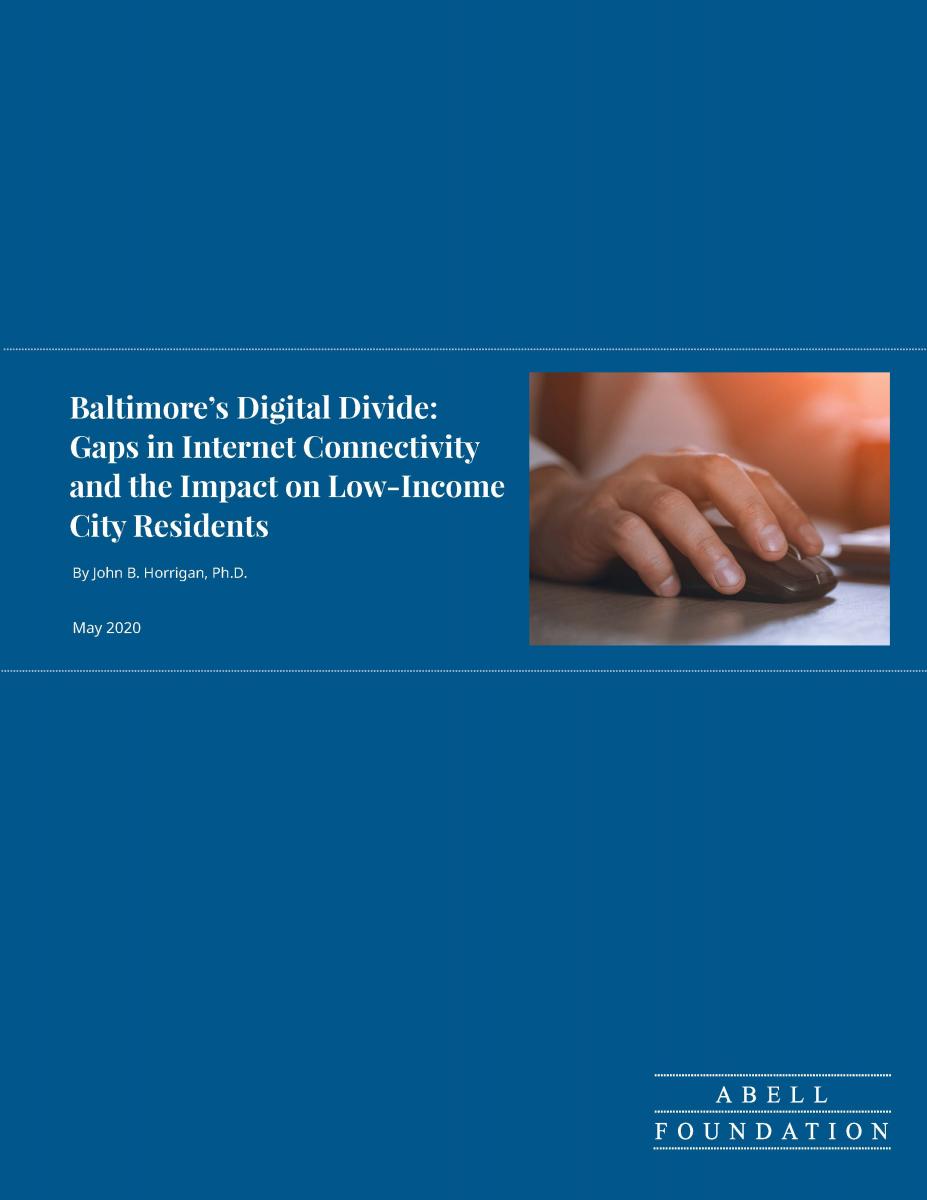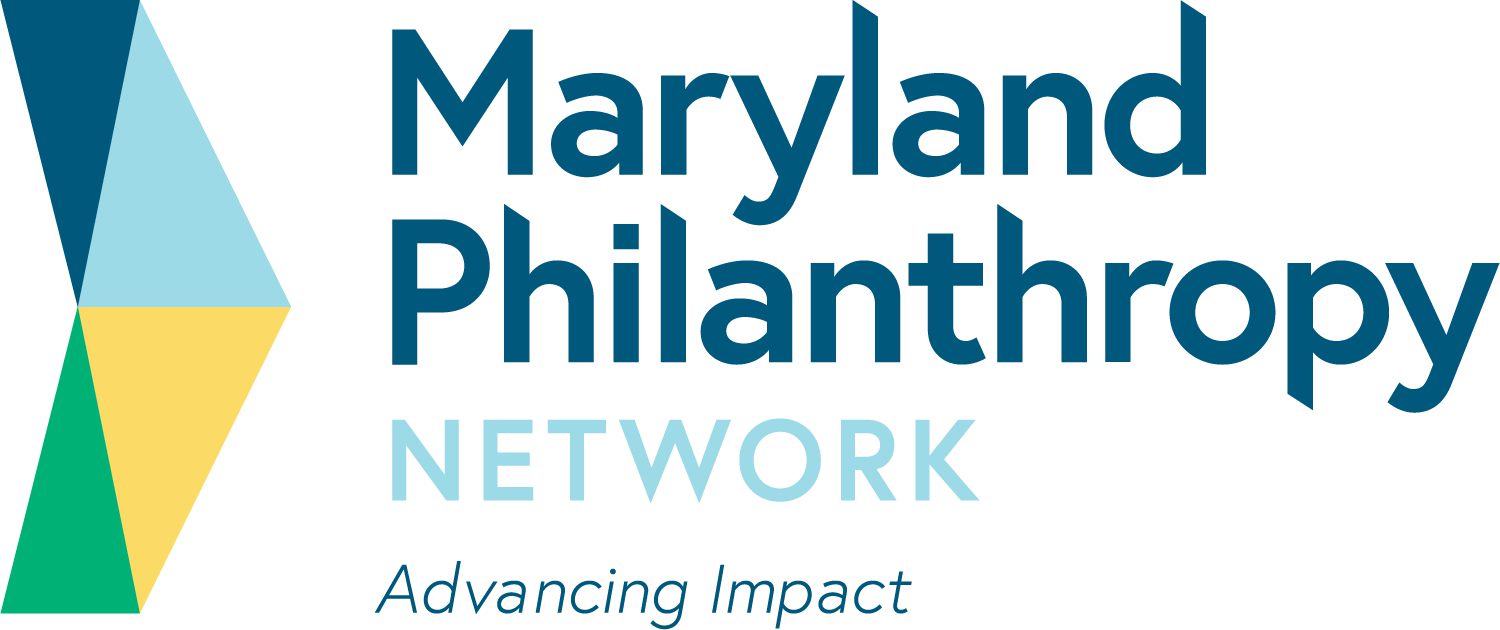Baltimore’s Digital Divide: Gaps in Internet Connectivity and the Impact on Low-Income City Residents
Click here to view and download the full report.
A new analysis of American Community Survey (ACS) data shows that large numbers of Baltimore households lack two essential tools for getting online: wireline broadband service at home and computer access. Wireline service gives people latitude for online activities, i.e., fast service with few data limits, that wireless access on smartphones or hotspots constrain. Computers enable web browsing on large screens that are better suited to learning, applying for jobs, or accessing government services. Smartphones, which enjoy wider adoption than other digital devices, are not a substitute for connectivity through a laptop or desktop computer.
This report examines internet access in 33 cities, including Baltimore. It includes cities to which Baltimore is frequently compared, such as Washington, D.C., Philadelphia, and Pittsburgh, and also ones that are known to contain clusters of the technology industry, such as Boston, Seattle, and San Jose. Compared to other cities, Baltimore has a significantly higher share of households lacking wireline broadband and desktop or laptop computers. Underscoring the persistence of Baltimore’s access gaps, wireline broadband adoption nationwide grew three times faster in the cities examined than in Baltimore from 2016 to 2018.
Key Findings
- In 2018, 96,000 households in Baltimore (40.7%) did not have wireline internet service, such as cable, fiber, or digital subscriber line service.
- Some 59.3% of Baltimore households have wireline internet service.
- Across a selection of 33 cities, 69.9% of households have wireline service.
- Nationwide, 69.6% of households have wireline service.
- Some 75,000 Baltimore City households, or one in three, do not have either a desktop or laptop computer.
- This means that over two-thirds (68.5%) of Baltimore households have a desktop or laptop computer in Baltimore.
- For the 33 cities studied, 75.7% of households have desktop or laptop computers.
- For the United States as a whole, 77.5% have such computers in the home.
- In Baltimore City, nearly 20,000 households with children under the age of 17 do not have wireline broadband or computers at home.
- Specifically, 19,200 households with children in the city do not have wireline broadband at home, or 34.7% of such households.
- More than one-quarter (27.3%), or 15,000 households with children, do not have either a desktop or laptop computer.
- These gaps are pronounced for low-income homes with children; 80% of homes lacking computers are in the bottom half of the city’s income distribution.
- For wireline broadband at home, 64% of homes without this service are in the lower 40% of the city’s income distribution for households with children.
- Baltimore fares poorly in comparison to other cities and the nation on both levels of home wireline broadband adoption and growth in adoption since 2016.
- Baltimore ranks 29th out of the 33 cities examined for home wireline broadband adoption.
- Looking at trends, since 2016, Baltimore’s home wireline subscription rate has barely moved, going from 58.4% in 2016 to 59.3% in 2018.
- For the 33 cities studied, home wireline broadband adoption grew from 67.1% in 2016 to 69.9% in 2018.
- For the United States, home wireline broadband adoption grew from 67.3% in 2016 to 69.6% in 2018.
- Gaps for home wireline broadband adoption and computer adoption are particularly severe in Baltimore City for low-income households and communities of color.
- For home wireline broadband, 73.3% of white households in Baltimore City have this service compared with 50.2% of African American households and 46.4% of Hispanic households.
- For desktop or laptop computers, 80.7% of white households have these devices, while 60% of African American ones do; the figure for Hispanic households is 47.5%.
- With respect to income, just 33.8% of low-income Baltimoreans (those whose annual household incomes are less than $25,000) have home wireline service compared with 83% for households whose annual incomes exceed $75,000.
- For computers, 42.8% of low-income Baltimore homes have a desktop or laptop compared with 90% of households with annual incomes above $75,000.
FIND MORE BY:

